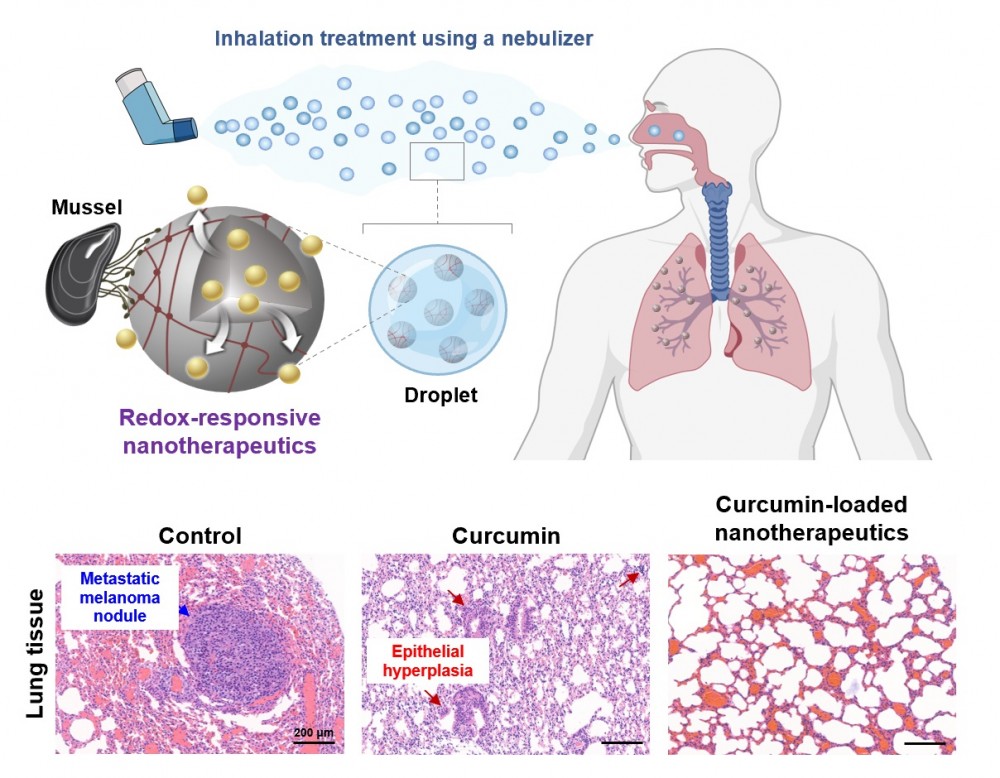
연구
Research Outcome
미래를 창조하는 포스텍 화학공학과
Inhalable redox-activatable mucoadhesive nanotherapeutics for targeted treatment of lung cancer
- Title of paper
- Inhalable redox-activatable mucoadhesive nanotherapeutics for targeted treatment of lung cancer
- Author
- [차형준 교수 연구실] 폐암 표적 치료를 위한 흡입 가능한 산화환원 반응형 점막 접착성 나노치료제 개발
- Publication in journal
- Biomaterials Volume 316, 123004 (202505)
- Publication date
- 20241209
[Abstract]
Inhalation delivery has been considered a promising choice for treating lung cancer because it can shuttle therapeutic payloads directly to cancer tissues via simple and noninvasive procedures while reducing systemic toxicity. However, its clinical application still faces challenges, especially for delivering hydrophobic chemotherapeutic drugs, due to poor absorption on mucosal tissues and limited therapeutic performance. Herein, we propose inhalable mucoadhesive proteinic nanoparticles (NPs) capable of facilitating reliable pulmonary drug delivery and redox-responsive anticancer therapeutic effects to realize noninvasive, localized treatment of lung cancer in a highly biocompatible, site-specific manner. Thiolated mussel adhesive protein (MAP)-based NPs (thMAP NPs) can be administered to target tissues via an easy and facile nebulization process due to their superior MAP-driven adhesion ability and sufficient structural integrity. Curcumin (Cur)-loaded thMAP NPs (thMAP@Cur NPs) demonstrated efficient cellular uptake through the thiol-mediated pathway and controlled the intracellular release of Cur in response to the reductive environment in cancer cells. The nebulized thMAP@Cur NPs elicited prolonged retention in lung tissue without causing any detectable adverse effects, leading to significant inhibition of metastatic lung cancer in vivo. Thus, these protein-based redox-responsive mucoadhesive NPs hold great promise as robust inhalable drug delivery platforms to achieve effective, localized treatment of pulmonary cancer and other respiratory diseases.
DOI: https://doi.org/10.1016/j.biomaterials.2024.123004
LINK: www.sciencedirect.com/science/article/pii/S0142961224005404?via%3Dihub




